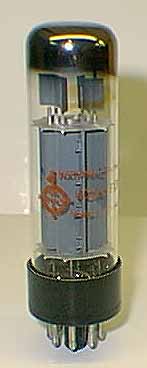
[Character][Character][Character][Number][Number][Number]
The coding in Italic is optional. Valid examples are:
- ECC85
- DY85
- PCF500
- ECL86
 |
The European coding scheme for tubes is does consist of two or more alphabetic characters and is followed by two or more digits:
[Character][Character][Character][Number][Number][Number] The coding in Italic is optional. Valid examples are:
|
| Description | Heated | |||
| Directly | Indirectly | |||
| A | 4V | - |  | |
| B | 180mA |  | - | |
| C | 200mA | - |  | |
| D | 1.2 - 1.4V |  | - | |
| E | 6,3 V | - |  | |
| F | 13V | - |  | |
| G | 5V | - |  | |
| H | 12.6V |  | - | |
| K | 2V |  | - | |
| O | Cold cathode, used for germanium diode and transistor | |||
| P | 300 mA | - |  | |
| U | 100mA | - |  | |
| V | 50mA | - |  | |
| Z | ||||
| Description | ||
| A | Low power diode | |
| B | Double diode with common cathode (rectifier diode excluded) | |
| C | Triode (excluding power output triodes) | |
| D | Power output triode | |
| E | Tetrode (excluding power output tetrodes | |
| F | Pentode (excluding power output pentodes) | |
| H | Hexode, heptode (of hexode type) | |
| K | Octode, heptode (of octode type) | |
| L | L - Power output tetrode/pentode | |
| M | Tuning indicator | |
| P | Tube with secundary emission (special applications) | |
| Q | Enneode | |
| W | Half-wave rectifier diode, gas filled | |
| X | Full-wave rectifier diode, gas filled | |
| Y | Half-wave rectifier diode | |
| Z | Full-wave rectifier diode |
| 1 | Miscellaneous base types | |
| 2 | Miniature 10-pin base (JEDEC F10-61) | 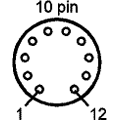 |
| 3 | Octal base (I.E.C. 67-1-5a) | 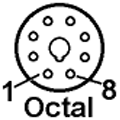 |
| 5 | Novar/magnoval base (JEDEC E9-75 and E9-23) |  |
| 8 | Noval base (I.E.C. 67-1-12a) | 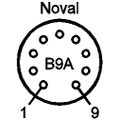 |
| 9 | Miniature 7-pin base (I.E.C. 67-1-10a) | 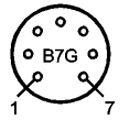 |